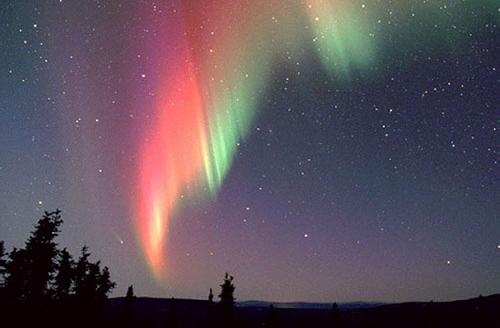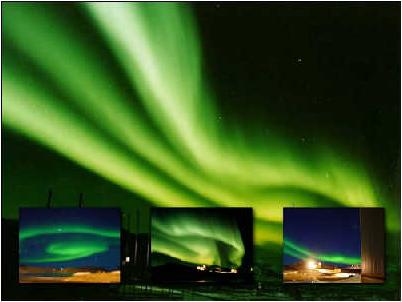Aurora
Auroral displays are some of the most impressive spectacles of nature. Curtains of light, rays, arcs, pulsating, and dancing are all terms used to describe these red, green, or sometimes purple light shows. This mysterious and magical phenomena, in fact, arises from events on the Sun millions of kilometres away. Massive solar flares often blast streams of charged particles into the solar wind and outwards towards the Earth. These particles are directed by the magnetic field of the Earth where they collide with atoms in the atmosphere. It is these collisions which generate the beautiful lights which are observed as the aurora. The patterns and shapes of the aurora are determined by the changing flow of charged particles and the varying magnetic fields.
Aurorae are most commonly visible at high north or south latitudes. However, at times when the Earth is most affected by activity on the Sun, they can be seen at lower latitudes. In Australia, aurorae have been seen on rare occasions from as far north as southern Queensland. But they are much more likely to be seen from the south of the continent.
Aurorae are commonly called the northern lights or the southern lights; or more technically the aurora borealis (north) or aurora australis (south).




